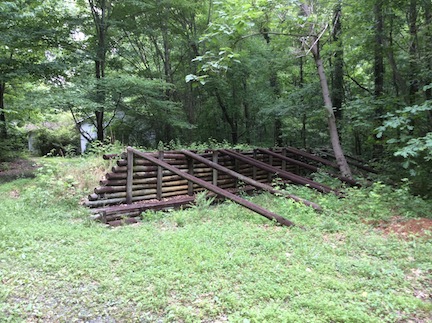The Road to Atlanta: The Battle of Gilgal Church

While Thomas contended with the Pine Mountain Salient, on June 15, 1864, Joe Hooker’s XX Corps was ordered forward to make a strong reconnaissance of the main Confederate line west of the Mountain. Two engagements resulted: the Battle of Gilgal Church and the Battle of Pine Knob. Often referred to as one battle, they really should be considered two engagements and will be dealt with here as such.
Hooker moved southward on the morning of the 15th as the roar of cannon around pine mountain caused the humid air to almost vibrate. At around 2 p.m., he was confronted by a long line of entrenchments sporting the distinctive blue-and-white battleflags of Gen. Patrick Cleburne’s division and knew a tough fight would follow.

Cleburne’s line ended near a little Hardshell Baptist Church known as Gilgal and was actually the western flank of Johnston’s infantry line. From there to Lost Mountain, Confederate Cavalry troopers held the line. Hooker, however, was headed straight for Cleburne’s Infantry. General Daniel Butterfield, formerly Hooker’s chief of staff—and better known as the composer of “Taps” than as a general—was to assault the left of Cleburne’s line near the Church with his 3rd Division.
Butterfield formed his command in a column of brigades, but only committed one brigade to the fight, ensuring Cleburne’s men had the advantage. Gen. Willaim T. Ward’s First Brigade advanced under heavy skirmish fire and found the tangled forest in Cleburne’s front, along with a ravine, slowed their advance. Then they came under heavy artillery fire from two batteries posted along the Confederate line.
Among the units of Ward’s Brigade was the 70th Indiana Infantry, commanded by Colonel Benjamin Harrison. “Colonel Harrison commanded his regiment to fix bayonets and said: ‘Men, the enemy’s works are just ahead of us, but we will go right over them. Forward! Double-Quick! March!’” one member of the 70th later recalled. “Every man sprang forward with a yell, and we soon came to a dirt road where a terrific volley was fired into us, from what we supposed was the reserved skirmishers of the enemy. We saw the flash of their guns and dropped to the ground, so the volley did us but little harm. Then we were up and went forward with a rush and a yell…when close up to the chevaux de fries the enemy opened on us from a battery, and continued to pour shot and shell into us for several hours.”
Butterfield’s attack stalled in the face of the heavy fire and, as darkness fell, his men were ordered to stop pressing the attack and dig in, which they began to do in earnest. After dark, they were relieved by Col. James Coburn’s brigade.
